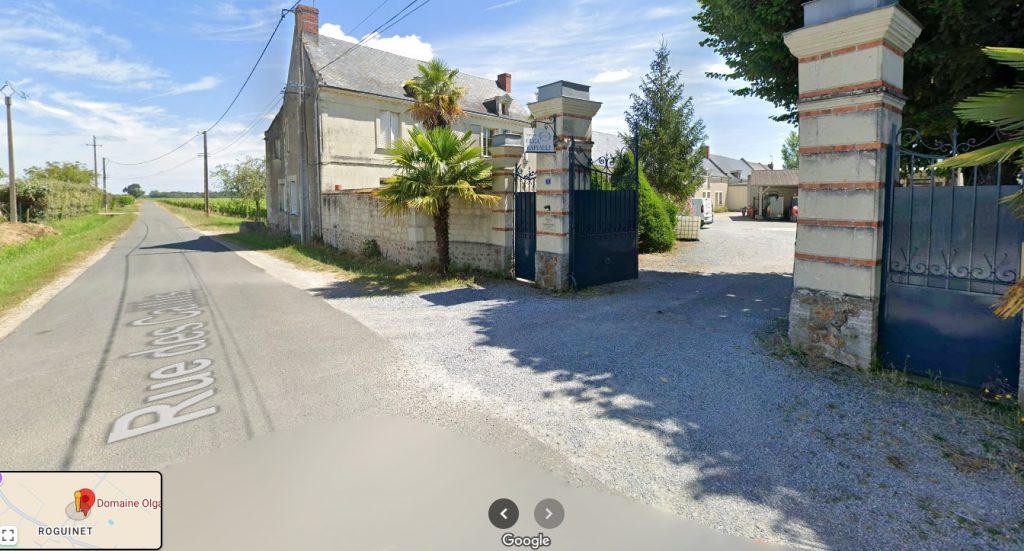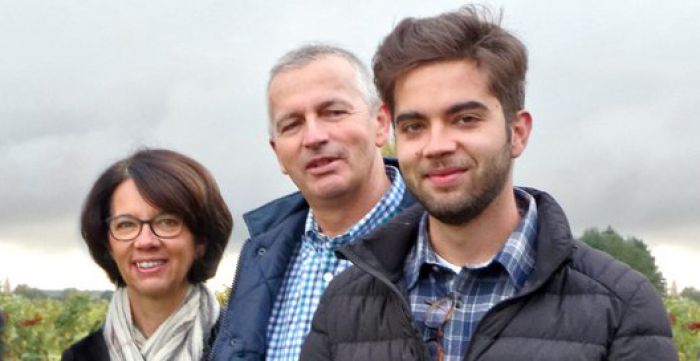One of Chinon’s most enduring and subtly appreciated domaines is Olga Raffault, which is nestled into the tranquil curves of the Loire Valley, where the Vienne River flows past chalky cliffs and mediaeval villages. Respected by both collectors and sommeliers, this vineyard is a shining example of authenticity, restraint, and continuity in the Cabernet Franc world. With roots dating back almost a century, Olga Raffault has established its reputation through quietly continuous excellence and a resolute commitment to the Chinon terroir, rather than via marketing blitzes or showy luxury cuvées.
A Legacy Born from Resilience: The History of the Winery
The origins of Domaine Olga Raffault date back to the 1930s, a time when Chinon was still a largely overlooked corner of the Loire Valley. At the time, the appellation had yet to establish its modern-day prestige, and viticulture in the region remained deeply traditional and often familial. Olga Raffault and her husband Pierre farmed modest vineyard parcels near Savigny-en-Véron, with the dream of one day bottling their own wines under the family name.
Domaine Olga Raffault
1 rue des Caillis 37420 Savigny en Veron France
📞 +33 (0)2 47 58 42 16 or 06 72 06 42 69
📧 contact | 🌐 www.olga-raffault.com
📍 Domaine Olga Raffault on Google Maps | 🔗 Facebook

The turning point came in 1947, when Pierre died suddenly, leaving Olga with three children and the future of the estate in question. Rather than sell or retreat, Olga made a decision that would define the course of the winery for generations: she would continue the work herself. She was not alone—by her side stood Ernest Zenninger, a German prisoner of war who had been held in France and decided to remain after the war. Ernest had no formal winemaking training but possessed an uncanny intuition for the cellar and a profound respect for the land.

The two formed an unlikely but deeply effective partnership. Olga managed the vineyards and business, while Ernest assumed control of the cellar. Together, they set a course for quality and longevity at a time when the idea of estate-bottled Chinon was still novel. Their vision was grounded in the belief that Cabernet Franc, when grown in the right soils and treated with patience, could express profound depth and elegance.
By the 1950s and 60s, Domaine Olga Raffault had become one of the few estates bottling under its own label, at a time when most growers sold to négociants. This independence gave them control not only over viticulture and vinification but also over when and how their wines were released. The wines were aged slowly, sometimes for over a decade before being made available to the public—a practice considered eccentric at the time but now widely admired.
The domaine’s reputation grew gradually but steadily. While never seeking the spotlight, Olga Raffault became a name spoken with quiet reverence among those in the know—particularly among sommeliers and aficionados drawn to the intellectual depth and age-worthiness of their wines. By the 1980s, older vintages had begun to circulate in top wine circles, revealing the extraordinary longevity of the domaine’s restrained, traditionally made Chinon.
As the 21st century approached, stewardship of the winery passed to Olga’s granddaughter Sylvie and her husband, Eric de la Vigerie. Rather than reinvent the domaine, they chose to preserve its identity while integrating small innovations: more precise vineyard mapping, an even gentler approach in the cellar, and greater attention to organic practices. Under their care, the legacy of Olga and Ernest has not only endured—it has flourished.
The People Behind the Wines
At the heart of the domaine today are Sylvie Raffault and Eric de la Vigerie, whose quiet stewardship has elevated Olga Raffault’s already respected reputation into something closer to cult status. Their winemaking philosophy is one of patience and precision, embracing low-intervention techniques and allowing the wines to evolve naturally with time. Eric, trained as an oenologist, is known for his sharp focus on terroir expression and his reluctance to bend to trends. Sylvie, with a deep familial connection to the estate, brings an emotional continuity that ensures Olga’s legacy is never diluted.
Though the estate is small and the team intimate, the attention to detail is remarkable. Harvests are manual, fermentations spontaneous, and sulfur additions minimal. There is no cosmetic polish to these wines—only truth. The team’s humility and quiet confidence echo the personality of the wines themselves: structured, long-lived, and whisperingly expressive.
Vineyards & Terroir: Tuffeau, Sand, and Silence
Olga Raffault’s vineyards lie primarily in the Véron area between the Vienne and Loire Rivers, where microclimates create ideal ripening conditions for Cabernet Franc. The most iconic vineyard is Les Picasses, a south-facing slope composed of tuffeau, Loire Valley’s signature soft, chalky limestone. These soils retain moisture, reflect heat, and lend the wines a particularly ethereal minerality.
In addition to Les Picasses, the estate also farms vineyards on sandy and gravelly soils near Savigny-en-Véron and Chinon proper. These lighter soils yield wines with more immediate charm and approachability, often bottled as Chinon “Les Barnabés” or simply as Chinon Rouge. The diversity of terroir gives the estate a full palette of textures, from nervy and linear to deep and structured.
The vineyards are managed with great care, following organic principles (though not formally certified), with an increasing focus on biodiversity. Herbicides and systemic treatments are avoided, and grass is grown between rows to promote microbial life in the soil. The goal is to let nature speak, with as little interference as possible.
The Wine Portfolio: Age, Authenticity, and Agelessness
The flagship wine, Chinon Les Picasses, is one of the most iconic Cabernet Francs of the Loire Valley. Aged traditionally in large, old oak foudres and then in bottle for several years before release, it is a wine built for cellaring—firm in its youth but gorgeously complex with age. Bottles from the 1980s and 1990s still sing today, with notes of graphite, sous bois, and dried cherry unfurling gracefully after decades.
The Chinon Les Barnabés, grown on alluvial sand and gravel soils, is the more aromatic and fruit-forward sibling, meant for earlier drinking but never short on detail. Its pure red berry profile and supple texture make it a sommelier favourite for pairing with charcuterie, roast poultry, and vegetarian cuisine.
In smaller quantities, the domaine also makes Chinon Rosé and occasionally white Chinon from Chenin Blanc—wines that speak to the same ethos of restraint and purity. Fermentations are native, macerations are gentle, and the goal is always balance and transparency, never extraction or flash.
What sets these wines apart is their commitment to time. In a market increasingly obsessed with immediacy, Olga Raffault insists on slow maturation. Wines are often held for five to seven years before being offered for sale. This rare approach allows drinkers to experience Chinon as it was meant to be: layered, earthy, refined, and alive.
A Legacy of Silence, Substance, and Strength
To visit Domaine Olga Raffault is to step back in time—not to a romanticized past, but to a place where wine still feels anchored in memory and soil. This is not a winery chasing headlines or innovation for innovation’s sake. It is a living, breathing legacy where each vintage is a conversation between generations, between vineyard and cellar, between nature and time.
In a wine world full of noise, Olga Raffault remains a quiet powerhouse—respected not for spectacle, but for substance. For sommeliers seeking purity, for importers seeking authenticity, and for wine lovers craving wines that speak in more than one register, this domaine remains one of the Loire’s most essential addresses.